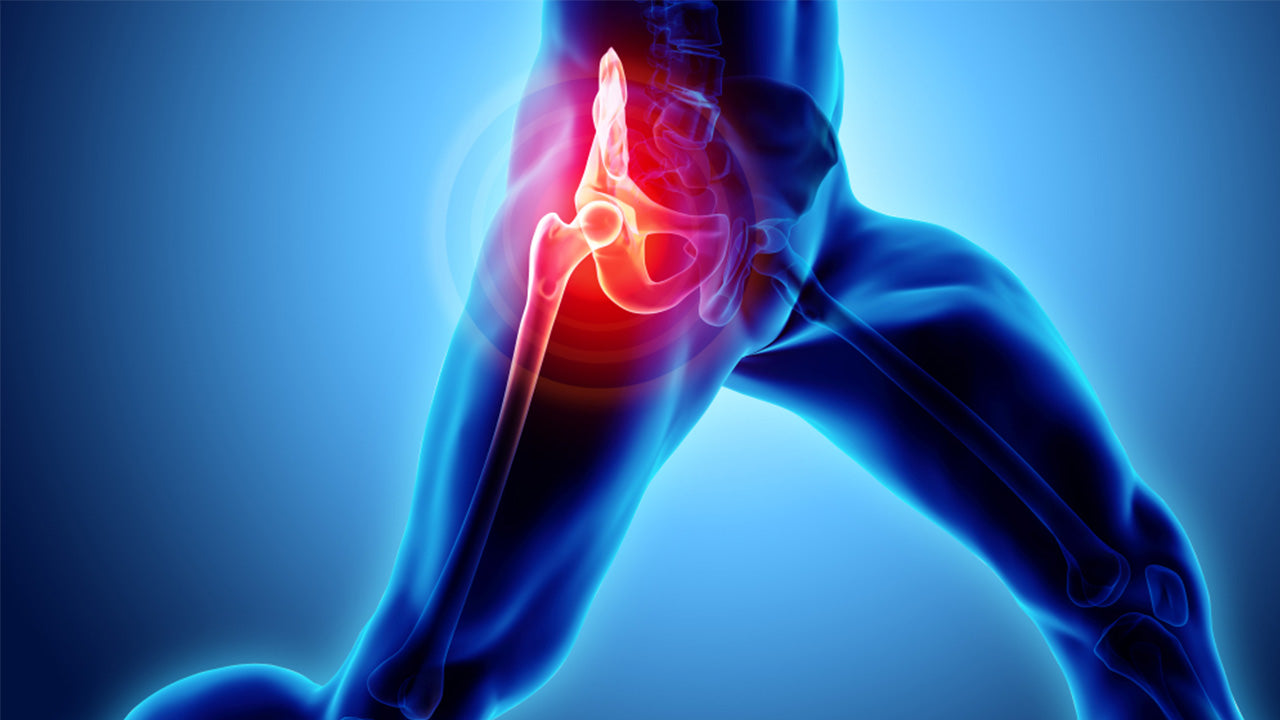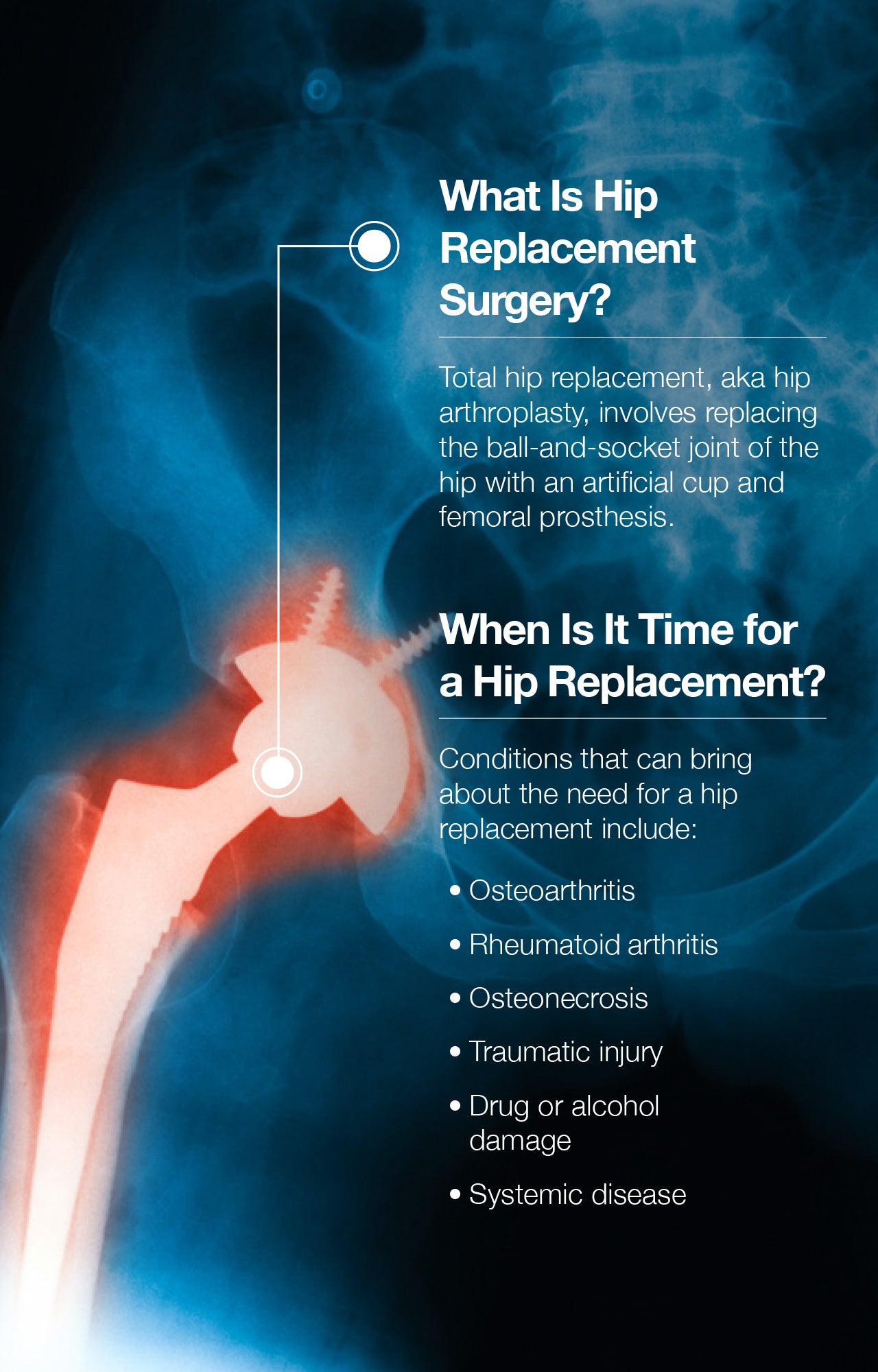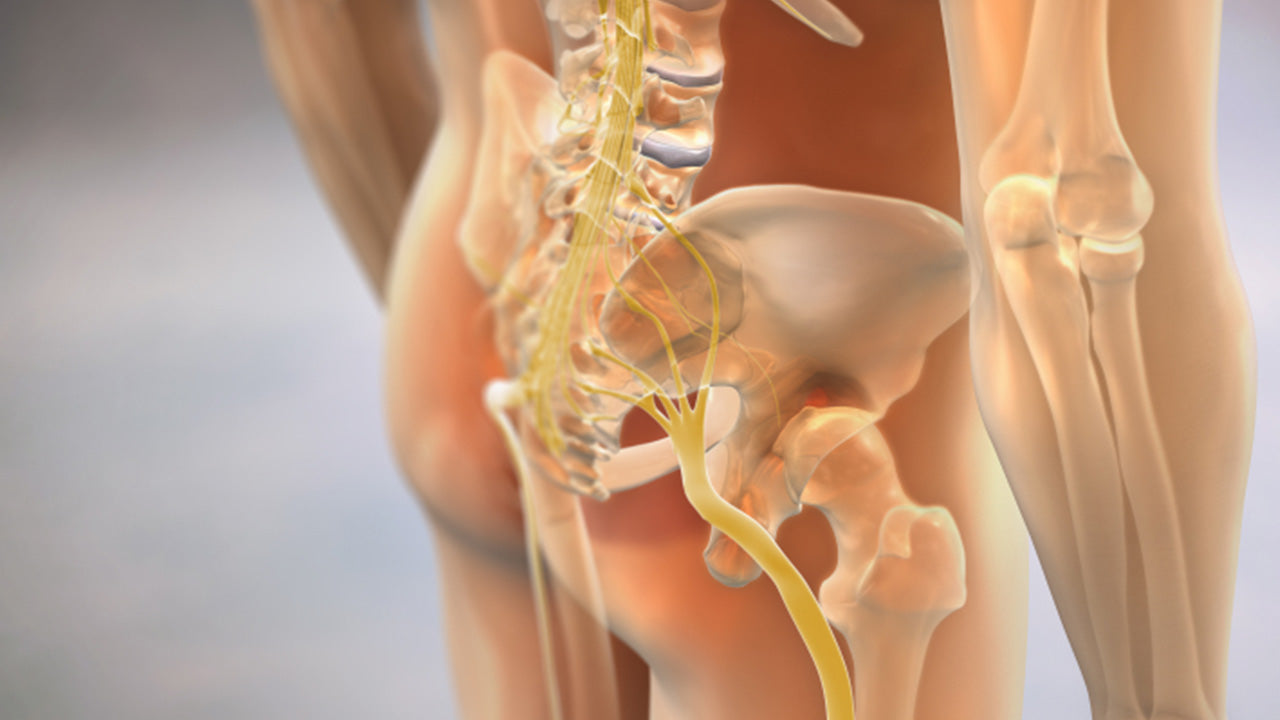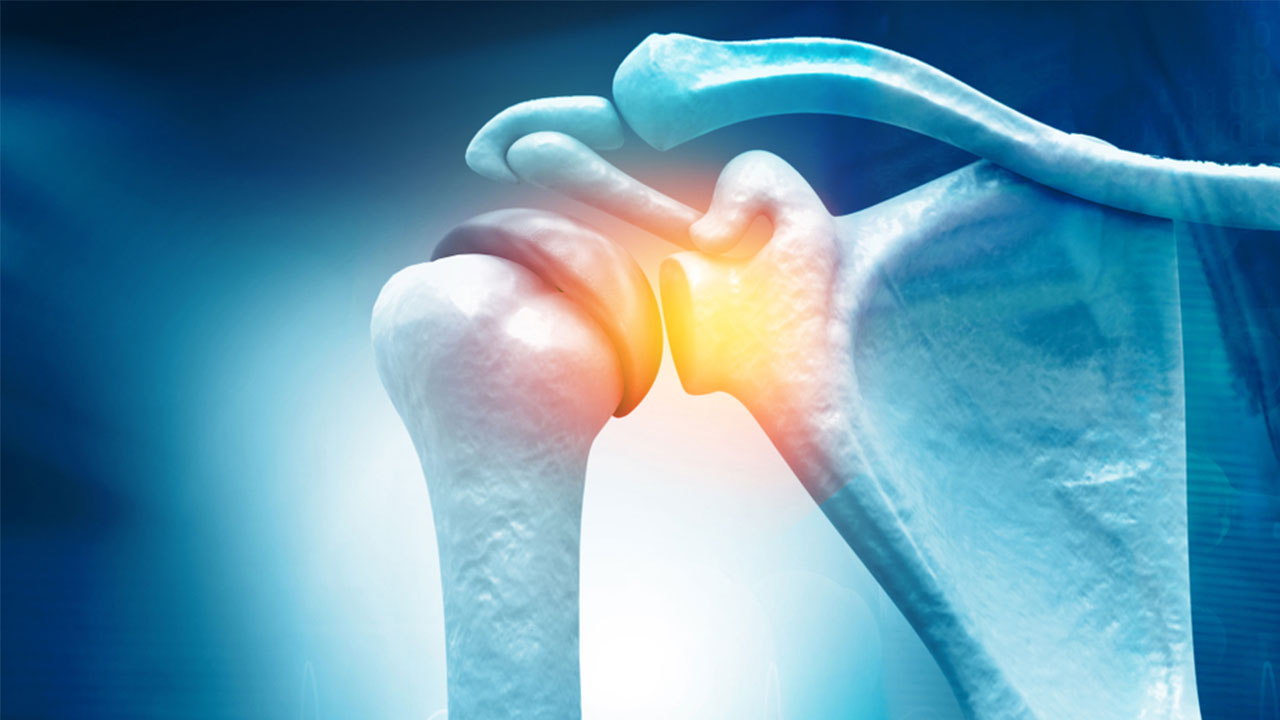Hip Replacement Recovery: How Amino Acids Can Make the Difference
 By: by Amino Science
By: by Amino Science

A hip replacement is a major surgery that requires extensive recovery time and physical therapy to regain your full range of motion. What is the timeline for hip replacement recovery and how can amino acids get you back on your feet faster? We have the scientific findings that could vastly improve your hip replacement recovery.
What Is Hip Replacement Surgery?
Total hip replacement is also known as total hip arthroplasty, a surgical procedure in which the bone and cartilage of the hip joint are replaced with synthetic material.
The hip joint is a ball-and-socket joint that can become damaged or diseased, which may cause debilitating pain and make daily movement and activity impossible without a cane or wheelchair. The "socket" is the cup-shaped part of the pelvis (the acetabulum) and the "ball" is the head of the femur (thighbone). During a total hip replacement procedure, both of these elements are replaced with an artificial ceramic or plastic cup (an acetabular prosthesis) and a metallic ball and stem (a femoral prosthesis).
Once those prosthetic parts are in position, the surgeon usually fixes them in place with methyl methacrylate, a bone cement. However, there is also an option for a "cementless" hip replacement that allows the femur bone to grow into the prosthetic stem—this procedure has a longer lifespan and is preferred for younger patients who require a hip replacement.

When Is It Time for a Hip Replacement?
More than 300,000 people in the U.S. have hip replacement surgery each year. They opt for this surgery in the hopes it will eliminate the pain in their hip joint and allow them to return to normal activities like walking, playing with grandkids, enjoying a round of golf, dancing, and more. For some, this means a total hip replacement, and for others, a partial, but in both circumstances recovery and rehab after hip surgery can take a long time.
Specifically, hip replacement recovery time takes between 10 to 12 weeks if everything goes according to plan and there are no complications that cause a set-back or extended hospital stay. Luckily, the American Academy of Orthopedic Surgeons reports that 95% of hip replacement patients experience a successful recovery and relief from hip pain, but it still isn't an easy option to choose.
Reasons for hip replacement surgery include:
- Osteoarthritis: This degenerative wear-and-tear arthritis results from damage done to the cartilage caps of your femur bones.
- Rheumatoid arthritis: An autoimmune disorder that causes chronic inflammation which over time can erode the cartilage and bone in the hips and other affected joints.
- Osteonecrosis: The ball of the femur bone may deform, collapse, and die if there is inadequate blood supply to the area. This naturally causes joint pain in the hip and requires replacement.
- Traumatic injury: Damage like fractures due to accidents or falls could damage the hip enough to necessitate a total replacement.
- Drug or alcohol damage: Chronic use of prednisolone or prednisone could cause hip bone necrosis, as could long-term alcoholism.
- Systemic disease: A disease like systemic lupus erythematosus could damage the hip and other parts of the body enough to require medical intervention.
The Step-by-Step Guide to Hip Replacement Recovery
When the decision is made to have hip replacement surgery and the operation is complete, you'll find yourself in the recovery room with a lot of work to do. Here is a general guideline on what you can expect.
1. Pain Control
The first day after a hip replacement is painful and involves a heavy amount of pain medications to manage. Even light activities like going to the bathroom and sitting on the toilet seat need to be done with the assistance of a nurse. After a day or two, the pain settles into a horrible ache (likened to feeling as though you've been "hit by a truck") due to the body's inflammatory response to the trauma of surgery.
Ask your doctor about taking natural anti-inflammatory support to help find relief without hard pharmaceuticals. You may want to begin taking anti-inflammatory supplements on the day of surgery to minimize as much pain as possible.
2. Baby Steps
It's important to take it slow in the first days after surgery when you are up and walking around again, but it's also important to perform light exercises for 20 to 30 minutes at a time to rebuild your strength and avoid complications like blood clots from forming.
Wearing compression stockings as you recover is another way to avoid life-threatening blood clots, and your doctor may prescribe blood thinners if she or he feels you're particularly at risk of forming a clot.
3. Build a Successful Environment
Coming home to a supportive environment is vital to your recovery. After you're discharged from the hospital and have your home exercise instructions from a physical or occupational therapist, you won't be able to rearrange your house, so before you go in, prepare your home accordingly.
- You may need a cane, walker, or wheelchair at first.
- Be sure to remove tripping hazards like rugs, floor mats, or toys used by children or pets before your procedure as you'll come home shuffling your feet.
- Get a long-handled shoehorn so you can safely put on your shoes without bending down (it's also recommended you avoid crossing your legs for up to 8 weeks after total joint replacement of the hip or hips).
- Install support rails in your bathroom and bedroom to help you recover safely in the coming weeks.
- You may need to rely on a family member for care or hire a home nurse.
- For the first 2 weeks after surgery, you will be at high risk of infection, so have a thermometer available to monitor for fever.
- You won't be able to shower until your surgical staples are removed about 10 to 14 days after the procedure, so some shower wipes designed for bathing while camping may help you stay clean and refreshed while you recover.
It's recommended that you borrow or rent items you'll only require for the short term to save money and ensure that your home isn't cluttered with recovery equipment you no longer need after you're healed.
4. Add Back Activities
It generally takes about 6 weeks before you are able to drive again after a hip replacement. A return to sexual activity also takes between 6 weeks and 2 months, with orthopedic surgeons advising that you hold off on sexual activity until you can move around unaided by a walker—until then your balance and strength are not fully returned.
5. Take Care of Yourself
Once your new joint is operational and you've returned to your daily activities, take the best care of yourself as possible by staying active, building strength, and eating well. Superfoods like dark berries and leafy greens are full of anti-inflammatory antioxidants and other powerful nutrients like vitamin K, which aids calcium absorption, a substance that's all the more important while your bones are healing and adapting.

Amino Acids for Hip Replacement Recovery
There's one more thing you can eat to speed up the healing process after hip replacement: take an amino acid supplement, such as Heal. This surgical recovery formula has been clinically proven to accelerate recovery from hip replacement surgery and improve rehabilitation outcomes.
1. Enhance Hip Function
This 2016 study on patients who received elective hip arthroplasty states plainly that essential amino acids "enhance hip function retrieval and improve plasma amino acid abnormalities" after surgery. Amino acids are the building blocks of our skeletal muscles and are irreplaceable when it comes to mending tissue after an invasive procedure like a joint replacement.
2. Reduce Surgical Stress Response
This 2018 review on which nutritional supplements best accelerate recovery after total hip replacement and total knee replacement found that amino acid supplementation helps speed up the return to full function for patients, especially those who are elderly, frail, or undernourished.
3. Prevent Muscle Atrophy
We mentioned that amino acids are the ingredients required for building muscle, an ability that's all the more valuable in cases of surgical recovery. Due to the long-term recovery involved, muscle atrophy is a very real risk when getting a new hip, and while your physical therapist is there to help you avoid muscle loss, a fully balanced essential amino acid supplement has been proven to help reduce the loss of muscle volume in adults recovering from orthopedic surgery.

It's Hip to Be Well
Hip replacement recovery is a lot of work: you have to be on the lookout for signs of infection, you have to move in new ways to avoid dislocating your new hip, and you have to put a lot of your life on hold just to fix this one joint. That being said, a new hip is a new lease on life, and once you've recovered you'll have the opportunity to be stronger than ever.
Without the pain of a deteriorating hip joint, you can return to activities you may have been missing out on for years, you can go from sedentary to stacked at any age, and you can look forward to a long, strong future that does not involve being a bedbound invalid. There's a light at the end of this tunnel, and you can get there faster with amino acid support.

Up to 25% off Amino
Shop NowTAGS: surgery
Join the Community
Comments (0)
Most Craveable Recipes




 833-264-6620
833-264-6620



















